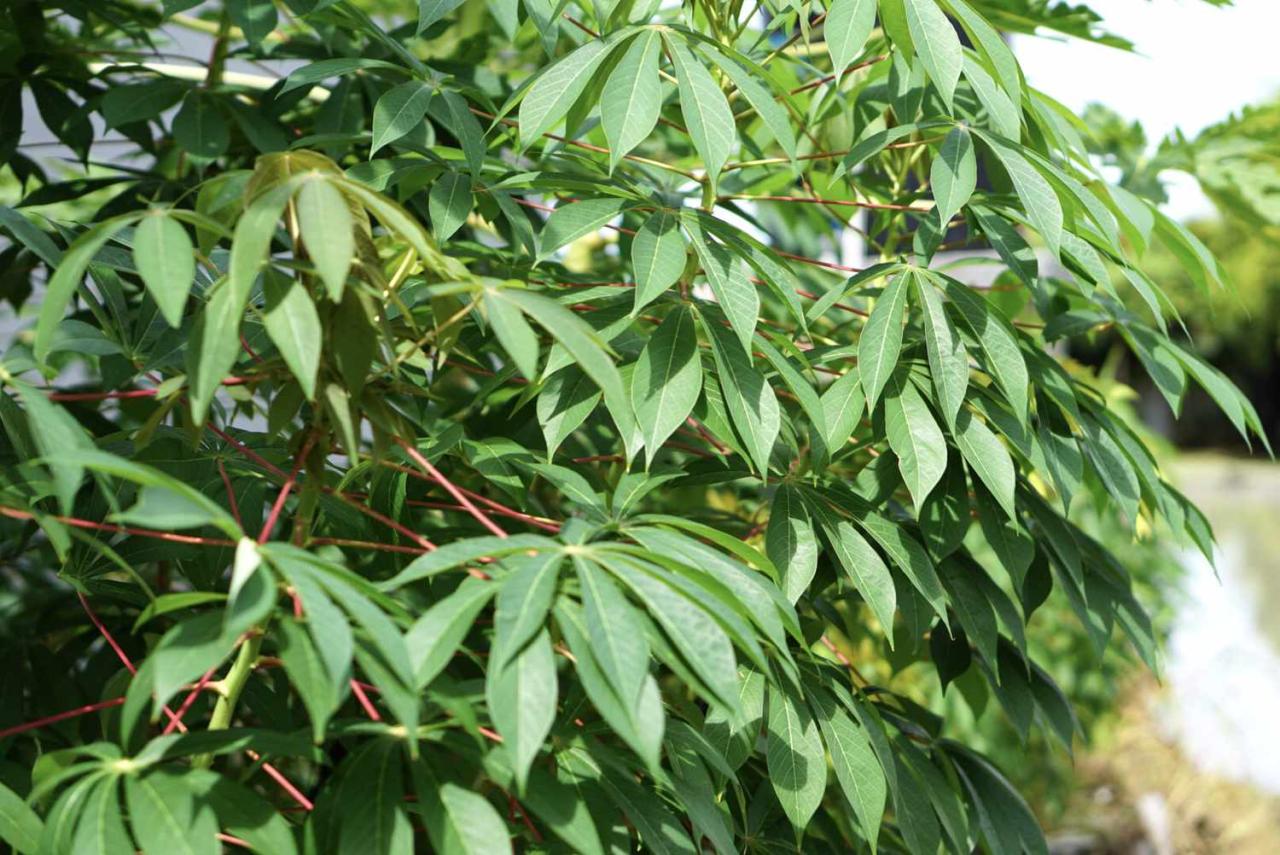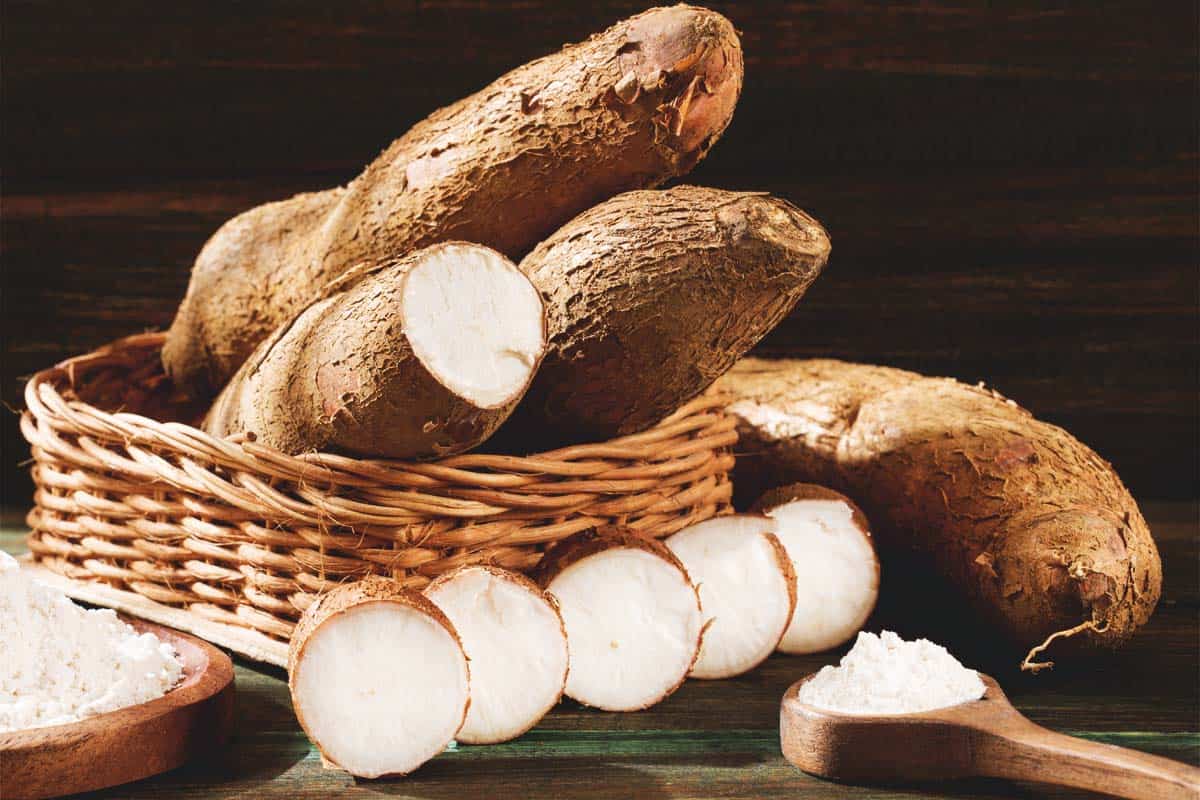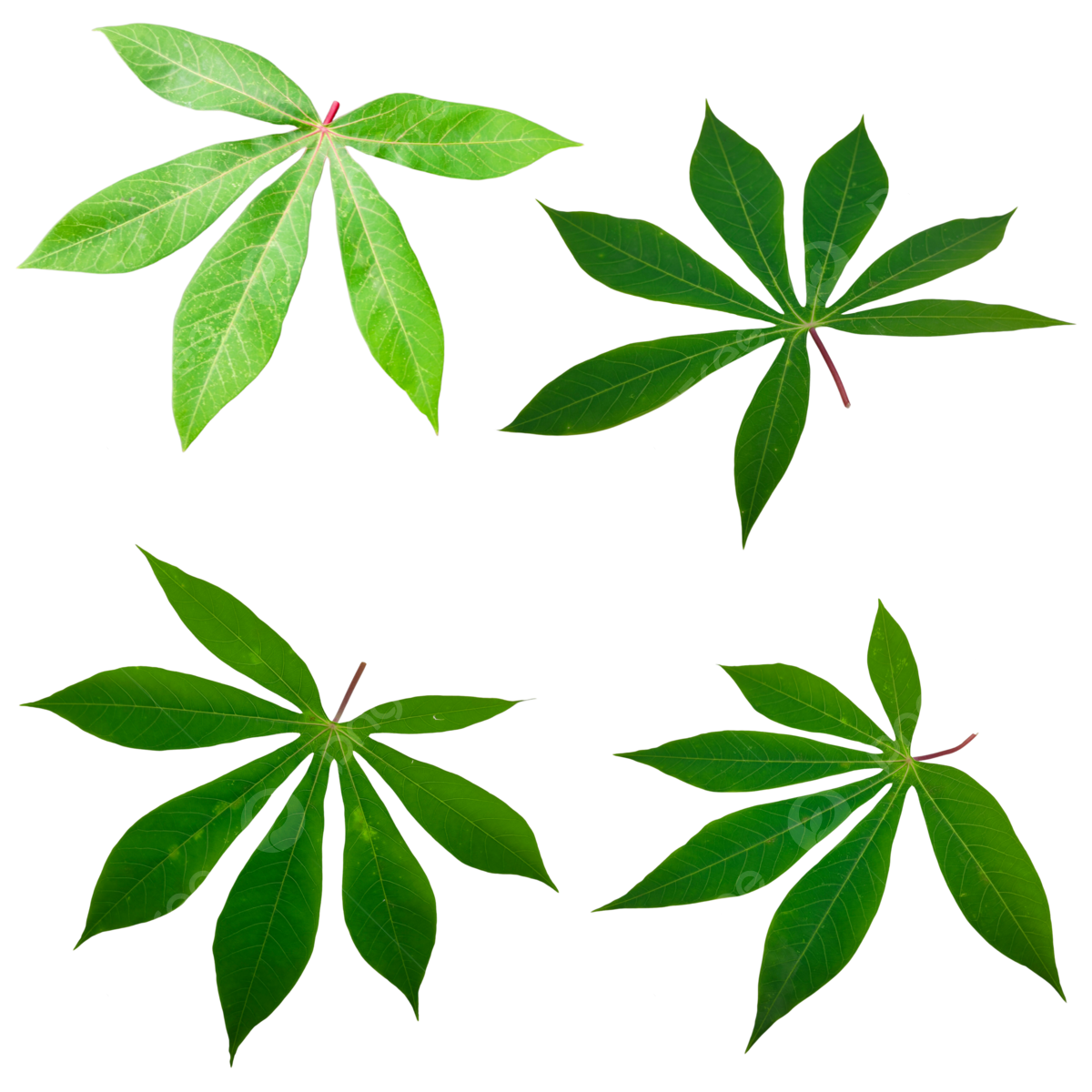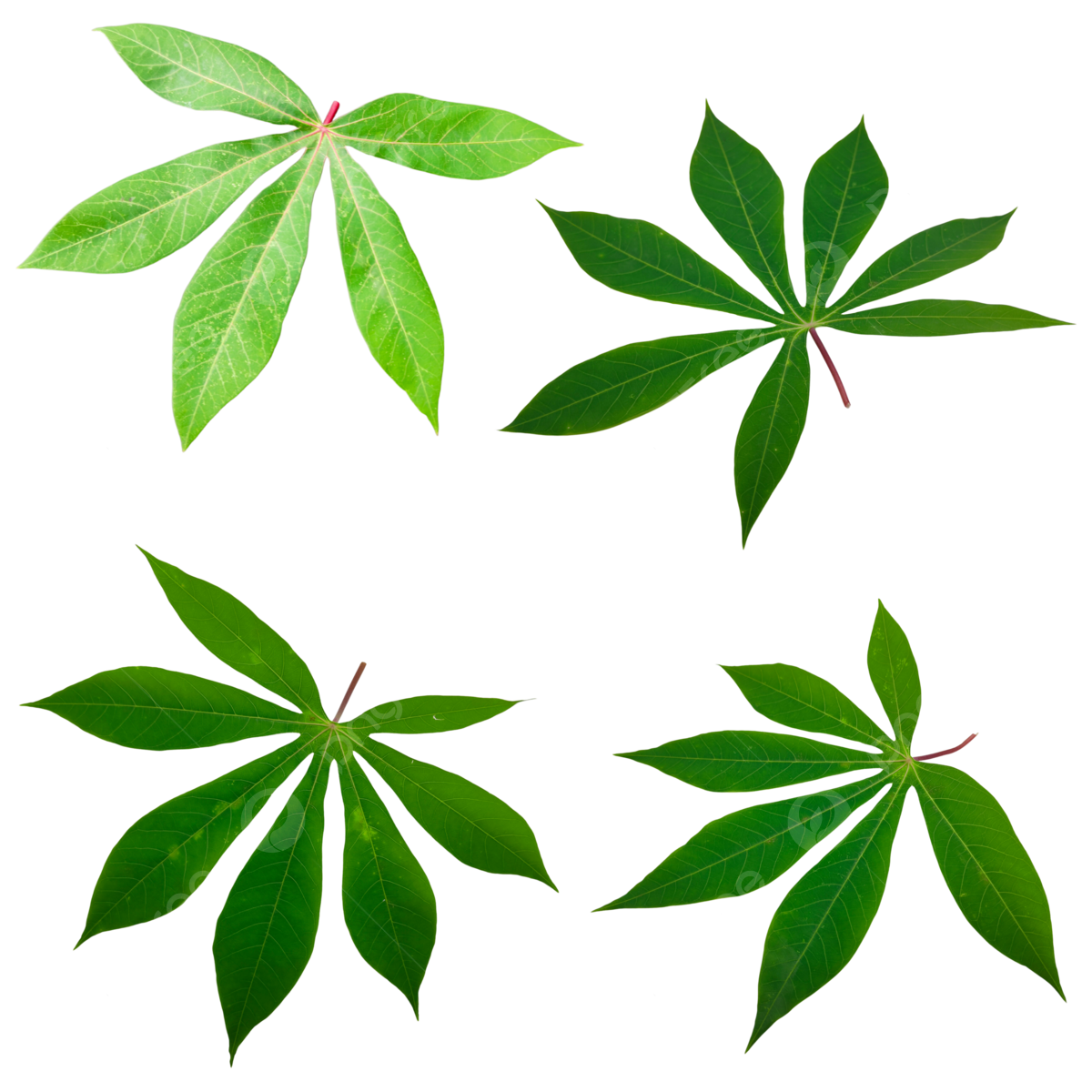Cassava Leaf Care 101: How to Grow and Use This Versatile Plant Successfully – this comprehensive guide will empower you to cultivate and utilize this nutrient-rich plant for a healthier lifestyle. Cassava, a starchy root vegetable native to South America, has long been a staple food source for millions around the world.
But did you know that the leaves of this plant are equally valuable? Cassava leaves are packed with essential vitamins, minerals, and antioxidants, making them a nutritional powerhouse. This guide delves into the art of cultivating and using cassava leaves, providing practical tips and techniques for successful growth and delicious culinary creations.
From understanding the basic principles of cassava leaf care to mastering propagation techniques, this guide offers a step-by-step approach to growing your own lush cassava plants. Discover the secrets to healthy growth, including the importance of sunlight, water, and soil conditions.
Learn about various propagation methods, such as cuttings and seeds, and gain insights into essential care practices like watering, fertilization, and pest control. We’ll explore the art of harvesting and preparing cassava leaves for culinary delights, showcasing a diverse range of recipes that highlight the versatility of this unique ingredient.
Get ready to unlock the potential of cassava leaves and embark on a journey of healthy eating and sustainable living.
Introduction to Cassava

Cassava, a starchy root vegetable, is a staple food for millions of people worldwide, particularly in tropical and subtropical regions. Its cultivation dates back thousands of years, with evidence suggesting its origins in the Amazon rainforest of South America. Cassava’s adaptability and resilience have made it a vital crop in many developing countries, providing sustenance and economic opportunities for farmers.
Versatility of Cassava
Cassava’s versatility is one of its most remarkable attributes. The starchy root is a primary source of carbohydrates, providing energy and sustenance to populations across the globe. It is used in various culinary preparations, from traditional dishes like fufu and tapioca to modern recipes incorporating cassava flour and chips.
Beyond its culinary applications, cassava finds uses in various industries, including:
- Animal Feed:Cassava leaves and roots are valuable sources of nutrients for livestock, contributing to animal feed production.
- Industrial Starch:Cassava starch is a key ingredient in various industrial processes, including the production of paper, textiles, and adhesives.
- Biofuel Production:Cassava is a promising source of bioethanol, a renewable fuel alternative to gasoline.
Interesting Facts About Cassava
Cassava possesses several interesting facts that highlight its unique characteristics and cultural significance:
- Nutritional Value:Although cassava is primarily a carbohydrate source, it also contains essential nutrients like vitamin C, potassium, and dietary fiber.
- Cultural Significance:Cassava plays a significant role in the cultural traditions and folklore of many communities. It features prominently in festivals, rituals, and culinary practices, representing a vital connection to heritage and identity.
- Resilience:Cassava is a resilient crop, thriving in challenging conditions, including drought and poor soil quality. This resilience makes it a valuable resource for food security in regions prone to climate change.
Understanding Cassava Leaf Care
Cassava, a versatile and resilient crop, requires minimal care to thrive. However, understanding the basic principles of cassava leaf care can significantly enhance its growth and yield. This section delves into the essential aspects of cassava leaf care, including the importance of sunlight, water, and soil conditions.
Sunlight Requirements
Cassava plants are sun-loving and require ample sunlight for optimal growth. They need at least six hours of direct sunlight daily to photosynthesize effectively and produce healthy leaves. Insufficient sunlight can lead to stunted growth, pale leaves, and reduced yield.
Ideally, plant cassava in a location that receives full sun exposure throughout the day.
Watering Needs
Cassava plants are relatively drought-tolerant, but regular watering is crucial, especially during the initial stages of growth. The frequency of watering depends on factors such as soil type, climate, and plant age.
- During the first few weeks after planting, ensure the soil remains consistently moist.
- As the plant matures, water deeply but less frequently, allowing the top layer of soil to dry slightly between waterings.
- Avoid overwatering, which can lead to root rot and fungal diseases.
Soil Conditions
Cassava thrives in well-drained, sandy loam soil with a pH range of 5.5 to 6.5. Poor drainage can lead to waterlogging and root damage.
- Before planting, amend the soil with organic matter, such as compost or manure, to improve its fertility and drainage.
- Regularly fertilize cassava plants with a balanced fertilizer, especially during the early stages of growth, to ensure adequate nutrient availability.
Planting Time and Spacing
The ideal planting time for cassava varies depending on the climate. In tropical and subtropical regions, cassava can be planted year-round. However, planting during the rainy season or when adequate moisture is available is recommended.
- Spacing between cassava plants is crucial for optimal growth and yield.
- Generally, a spacing of 1 to 1.5 meters between rows and 0.75 to 1 meter between plants is recommended.
Propagation Techniques
Cassava propagation can be achieved through two primary methods: cuttings and seeds. Each method presents its own advantages and disadvantages, influencing the choice of propagation technique based on the desired outcome and available resources.
Cuttings
Cuttings are the most common and efficient method for propagating cassava plants. They involve taking stem sections from mature plants and planting them to develop new roots and shoots. This method offers several advantages, including:
- Faster growth:Cuttings generally establish roots and begin growing faster than plants grown from seeds, enabling quicker production of cassava tubers.
- Preservation of genetic traits:Cuttings are clones of the parent plant, ensuring the preservation of desired characteristics like disease resistance or high yield potential.
- Ease of propagation:Cuttings are relatively simple to obtain and plant, making it a suitable option for both commercial and home gardeners.
However, cuttings also have some drawbacks:
- Limited genetic diversity:Using cuttings from a single parent plant can lead to reduced genetic diversity, making the plantation susceptible to diseases or pests.
- Risk of disease transmission:If the parent plant is infected with a disease, the cuttings can also carry the disease, potentially affecting the entire plantation.
To successfully propagate cassava using cuttings, follow these steps:
- Select healthy cuttings:Choose cuttings from mature, disease-free plants with vigorous growth. Cuttings should be at least 12 inches long and have at least three nodes.
- Prepare the planting medium:Use a well-drained soil mixture that is rich in organic matter. You can also use a mixture of sand and compost.
- Plant the cuttings:Dip the cut end of the cutting in rooting hormone to promote root development. Plant the cuttings in the prepared medium, ensuring that at least two nodes are buried.
- Water regularly:Keep the soil moist but not waterlogged. Water the cuttings deeply, allowing the water to drain completely.
- Provide shade:Newly planted cuttings benefit from partial shade, especially during the hot summer months.
Seeds
While less common than cuttings, propagating cassava from seeds is a viable option. Seeds are produced from flowers that develop on the cassava plant after pollination.
- Increased genetic diversity:Seeds offer a greater degree of genetic diversity compared to cuttings, reducing the risk of disease outbreaks and improving adaptability to various environments.
- Potential for new varieties:Seed propagation allows for the development of new cassava varieties with desirable traits, such as drought tolerance or higher yield potential.
However, using seeds for propagation also has some disadvantages:
- Slower growth:Plants grown from seeds typically take longer to establish roots and begin growing compared to those propagated from cuttings.
- Less predictable outcome:Seed propagation can result in variations in plant characteristics, making it challenging to predict the outcome of the offspring.
To successfully propagate cassava from seeds, follow these steps:
- Collect mature seeds:Harvest seeds from mature cassava flowers, ensuring they are fully developed and dry.
- Prepare the planting medium:Use a well-drained soil mixture that is rich in organic matter. You can also use a mixture of sand and compost.
- Sow the seeds:Sow the seeds in the prepared medium, spacing them approximately 6 inches apart. Cover the seeds lightly with soil.
- Water regularly:Keep the soil moist but not waterlogged. Water the seeds deeply, allowing the water to drain completely.
- Provide shade:Newly sown seeds benefit from partial shade, especially during the hot summer months.
Essential Care Practices

Providing the right care is crucial for cassava plants to thrive and produce abundant yields. This section will delve into the essential care practices, including watering, fertilization, pest and disease control, and pruning techniques.
Watering Frequency and Techniques
Watering is essential for cassava growth, particularly during the establishment phase. The frequency and techniques used can significantly impact the plant’s health and productivity.
- Frequency:Cassava plants require regular watering, especially during the initial stages of growth. The frequency depends on factors like climate, soil type, and plant size. Generally, watering every 2-3 days during the dry season and once a week during the rainy season is recommended.
- Techniques:Deep watering is crucial for cassava plants as their roots grow deep into the soil. Drip irrigation is an effective technique that delivers water directly to the root zone, minimizing water loss through evaporation.
Fertilization Schedule and Types of Fertilizers
Fertilization is crucial for cassava plants, as it provides the essential nutrients for healthy growth and high yields. The type and amount of fertilizer applied should be tailored to the specific needs of the plant and the soil conditions.
- Schedule:A balanced fertilizer containing nitrogen, phosphorus, and potassium should be applied at the planting stage and then at intervals of 2-3 months throughout the growing season.
- Types of Fertilizers:Organic fertilizers, such as compost and manure, are beneficial for improving soil structure and fertility. Inorganic fertilizers, like urea and ammonium sulfate, can provide a quick source of nutrients.
Pest and Disease Control Methods
Cassava plants are susceptible to various pests and diseases that can significantly impact their growth and yield. Implementing effective pest and disease control measures is crucial for protecting the plants.
- Pest Control:Common pests include mealybugs, whiteflies, and cassava green mites.
- Disease Control:Cassava mosaic disease (CMD) and cassava bacterial blight (CBB) are common diseases that can severely affect cassava plants.
Pruning Techniques for Maximizing Yield
Pruning is an essential practice for cassava plants, as it helps to control growth, promote branching, and increase yields.
- Timing:Pruning should be done during the early stages of growth to encourage branching and maximize yield.
- Techniques:Remove any dead or diseased branches and prune the main stem to encourage lateral growth.
Harvesting and Utilizing Cassava Leaves
Harvesting cassava leaves is a crucial aspect of utilizing this versatile plant. The leaves are a rich source of nutrients, offering a delicious and nutritious addition to various dishes. Understanding the optimal time for harvesting and proper techniques ensures both a bountiful yield and the health of the plant.
Harvesting Cassava Leaves for Consumption
The ideal time to harvest cassava leaves is when they are young and tender, typically around 3-4 months after planting. At this stage, the leaves are vibrant green and have a delicate texture. Avoid harvesting leaves from plants that are too young or too old, as they may not be as palatable or nutritious.
Tips for Harvesting Cassava Leaves
Harvesting cassava leaves requires careful attention to avoid damaging the plant. Here are some essential tips:
- Harvest from the top:Begin by selecting the topmost leaves, as these are generally the youngest and most tender. Avoid removing more than one-third of the leaves from a single plant.
- Use sharp tools:Employ clean, sharp shears or pruning scissors to ensure a clean cut and minimize damage to the plant.
- Leave a few leaves:Ensure that each plant has at least a few leaves remaining to allow for continued growth and photosynthesis.
- Avoid excessive harvesting:Over-harvesting can weaken the plant and affect its productivity. Allow the plant sufficient time to recover between harvests.
Preparing and Cooking Cassava Leaves
Once harvested, cassava leaves require careful preparation before cooking. This involves removing any stems or tough fibers and washing the leaves thoroughly to remove any dirt or debris.
- Blanching:Blanching cassava leaves for a few minutes in boiling water helps to soften the leaves and remove any bitterness. This process is especially beneficial for older leaves.
- Sautéing:Sautéing cassava leaves with garlic, onions, and other spices is a popular method of preparation. The leaves can be added to soups, stews, or stir-fries for a flavorful and nutritious addition.
- Boiling:Cassava leaves can also be boiled and then used in various dishes, such as salads, dips, or as a filling for wraps and sandwiches.
- Traditional Dishes:Cassava leaves are a staple ingredient in many traditional dishes around the world. For example, in West Africa, they are used in a popular dish called “Egusi soup.”
Benefits of Cassava Leaves
Cassava leaves, often overlooked as a culinary staple, are a nutritional powerhouse packed with essential vitamins, minerals, and antioxidants. These leafy greens offer a wide range of health benefits, making them a valuable addition to a balanced diet.
Nutritional Value of Cassava Leaves
Cassava leaves are a rich source of various nutrients, including:
- Vitamins:Cassava leaves are particularly high in vitamin A, which is crucial for vision, immune function, and cell growth. They also contain vitamin C, an antioxidant that supports immune function and collagen production. Additionally, they are a good source of vitamin B complex, including thiamin, riboflavin, and niacin, essential for energy metabolism and nerve function.
Just like timing is crucial for a lush lawn, as outlined in this helpful guide on How to Determine the Perfect Time for Sowing Grass Seed: Essential Lawn Tips , understanding the ideal conditions for planting cassava is key to successful cultivation.
Cassava thrives in warm temperatures and ample sunlight, making it a perfect addition to your garden, whether you’re growing it for its nutritious leaves or its starchy root.
- Minerals:Cassava leaves are abundant in minerals like iron, calcium, and potassium. Iron is vital for red blood cell production, calcium supports bone health, and potassium plays a role in regulating blood pressure and muscle function.
- Antioxidants:Cassava leaves are rich in antioxidants, such as flavonoids and carotenoids. These compounds help protect cells from damage caused by free radicals, reducing the risk of chronic diseases.
Health Benefits of Consuming Cassava Leaves
The nutritional profile of cassava leaves translates into numerous health benefits, making them a valuable addition to a healthy diet.
- Improved Digestion:Cassava leaves are a good source of fiber, which is essential for digestive health. Fiber aids in regulating bowel movements, preventing constipation, and promoting a healthy gut microbiome.
- Boosted Immunity:The high vitamin C content in cassava leaves supports immune function by boosting the production of white blood cells, which fight off infections.
- Enhanced Energy Levels:Cassava leaves are a good source of iron, which is crucial for red blood cell production. Red blood cells carry oxygen throughout the body, providing energy for various bodily functions.
- Improved Blood Sugar Control:Cassava leaves have been shown to help regulate blood sugar levels. This is beneficial for individuals with diabetes or those at risk of developing the condition.
- Reduced Risk of Chronic Diseases:The antioxidants present in cassava leaves help protect cells from damage caused by free radicals, which are linked to chronic diseases like heart disease, cancer, and Alzheimer’s disease.
Recipes Featuring Cassava Leaves

Cassava leaves, a staple in many cuisines, offer a unique flavor and texture that can be incorporated into various dishes. From traditional African recipes to modern culinary creations, these versatile leaves provide a wealth of possibilities for both novice and experienced cooks.
Traditional Dishes
Cassava leaves are a cornerstone of many traditional cuisines, especially in Africa and Southeast Asia. These recipes often feature simple ingredients and cooking methods, highlighting the natural flavors of the leaves.
- Egusi Soup (Nigeria):This hearty soup is a popular Nigerian dish made with ground melon seeds, vegetables, and meat or fish. Cassava leaves are often added to provide a distinct flavor and texture, adding a unique dimension to the soup.
- Spinach and Cassava Leaf Stew (Ghana):This simple yet flavorful stew combines spinach and cassava leaves with onions, tomatoes, and spices. The resulting dish is a delightful blend of earthy and savory flavors, making it a popular accompaniment to rice or fufu.
- Sinangag (Philippines):This popular Filipino dish is a garlic-fried rice often served with various toppings, including cassava leaves. The leaves add a unique flavor and texture to the rice, making it a satisfying and flavorful meal.
Modern Culinary Applications, Cassava Leaf Care 101: How to Grow and Use This Versatile Plant Successfully
Cassava leaves are increasingly finding their way into modern cuisine, inspiring innovative dishes that showcase their versatility and culinary potential.
- Cassava Leaf Pesto:This vibrant pesto is a flavorful and healthy alternative to traditional basil pesto. It can be made with fresh cassava leaves, garlic, olive oil, and Parmesan cheese, creating a vibrant and aromatic sauce that can be used for pasta, sandwiches, or as a topping for grilled meats and vegetables.
- Cassava Leaf Salad:A refreshing and flavorful salad can be made with blanched cassava leaves, tossed with a variety of vegetables, fruits, and a light vinaigrette. The leaves provide a unique texture and a slightly bitter flavor that complements the other ingredients.
- Cassava Leaf Fritters:These crispy fritters are a delicious and easy snack or appetizer. They are made with a mixture of chopped cassava leaves, flour, spices, and herbs, then deep-fried until golden brown and crispy.
Conclusion
Growing cassava leaves is a rewarding experience that offers a plethora of benefits. This versatile plant provides a sustainable and nutritious food source, while its leaves are packed with essential nutrients and antioxidants. By understanding the key aspects of cassava leaf care, you can successfully cultivate this plant and reap the rewards of its abundant harvest.
While cassava leaves offer a wealth of culinary and medicinal benefits, achieving optimal growth requires careful attention to their needs. Just like ensuring the right timing for seeding a lush lawn, understanding the ideal conditions for cassava leaf cultivation is crucial.
For a comprehensive guide on selecting the best time to sow grass seed and create a stunning and green lawn, check out this insightful article: The Best Time to Sow Grass Seed: Tips for Creating a Stunning and Green Lawn.
By applying similar principles of timing and care, you can cultivate healthy and vibrant cassava leaves for a variety of purposes.
Key Takeaways
Here are some key takeaways to remember as you embark on your cassava leaf growing journey:
- Cassava leaves are a nutritious and versatile food source, rich in vitamins, minerals, and antioxidants.
- Proper propagation techniques, including stem cuttings and seeds, are crucial for successful cassava cultivation.
- Providing adequate sunlight, well-drained soil, and regular watering are essential for healthy growth.
- Harvesting cassava leaves at the appropriate time ensures optimal nutritional content and flavor.
- Cassava leaves can be incorporated into a wide range of culinary creations, from soups and stews to salads and stir-fries.
Final Conclusion: Cassava Leaf Care 101: How To Grow And Use This Versatile Plant Successfully
Growing and using cassava leaves can be a rewarding experience, offering a sustainable and delicious way to enhance your diet. By following the guidance provided in this guide, you can cultivate healthy cassava plants, harvest nutritious leaves, and create a variety of culinary delights.
Embrace the versatility of cassava leaves and discover a world of flavors and health benefits. Start your journey today and reap the rewards of this remarkable plant.
Question Bank
How often should I water my cassava plants?
Water your cassava plants regularly, especially during dry periods. Aim for deep watering, ensuring the soil is moist but not waterlogged.
What are the best fertilizers for cassava plants?
Cassava plants benefit from balanced fertilizers rich in nitrogen, phosphorus, and potassium. Organic fertilizers like compost and manure are excellent choices.
Can I use cassava leaves in salads?
Yes, cassava leaves can be added to salads for a unique flavor and nutritional boost. Blanch them briefly before adding to salads to soften their texture.
